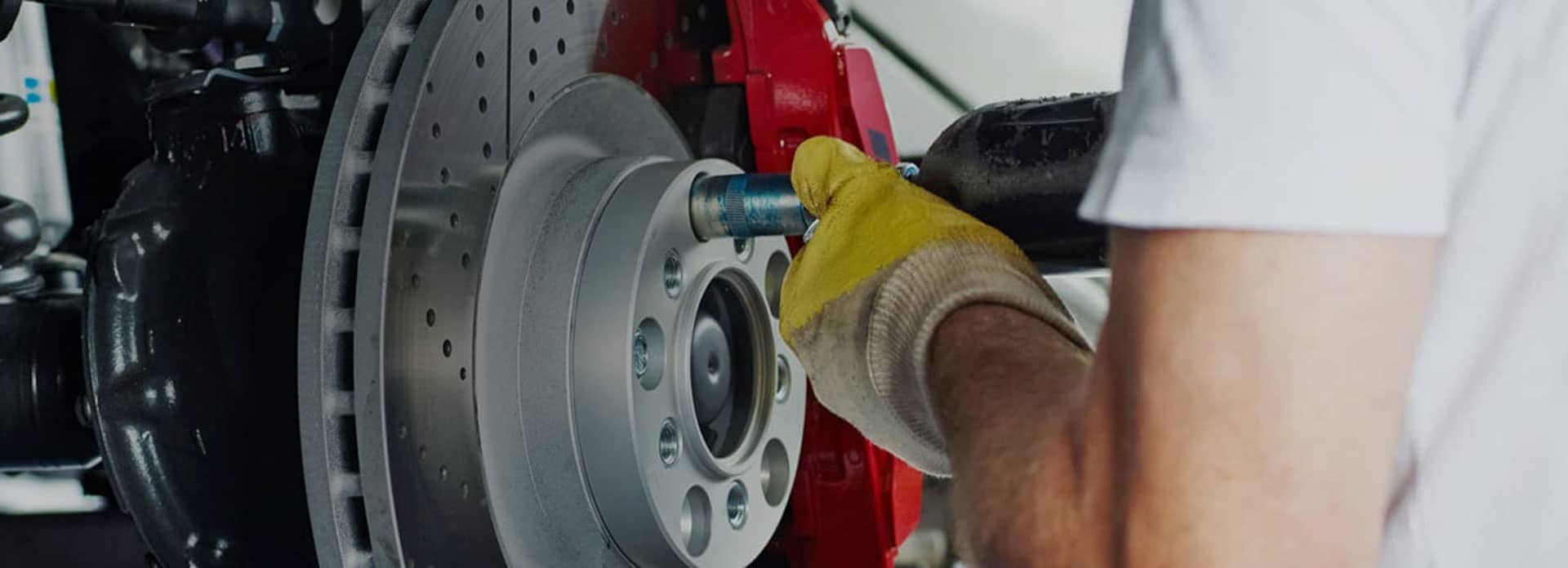
AUTONET TV
Archive for April 2025The Light Many Drivers Fear (Check Engine Light)Posted April 27, 2025 3:38 AMAsk just about any driver about one thing they fear seeing inside their vehicle and they'll say it's the Check Engine light coming on. You know, that little light on your instrument panel that is in the shape of a vehicle engine, often accompanied by the words Check, Check Engine, Check Engine Service, or Service Engine Soon. There are so many different reasons that light shows up, from something as simple as a loose gas cap to a more serious problem that requires immediate attention. The Check Engine light comes on because a component of your vehicle's onboard diagnostics system is telling you something isn't operating normally. Your vehicle has a lot of sensors built in, all tied together by computers. When the sensors are showing that things somewhere aren't functioning the way they should be, they alert the vehicle's diagnostic computers and tell you something's amiss. The simple rule is if the Check Engine light is on steadily, it's something you should have checked soon but it's not urgent. If it's flashing or has turned red or orange instead of yellow, get your vehicle checked out as soon as possible. If you don't, you may be facing some costly repairs. Here are a few problem areas that may trigger your Check Engine Light.
As you can see, there are many things that can cause the light to come on, and when it does, it really is a good idea to find out why. When you bring your vehicle in, we have an electronic device that can read a code or multiple codes stored in your vehicle's computers. That will provide the technician with clues pointing to the cause of the trouble and helps pinpoint where that trouble is. McPherson Automotive Combustion Choreography: Timing Belt Replacement at McPherson Automotive in Du QuoinPosted April 20, 2025 3:39 AMHave you ever seen a ballet performance? Have you wondered how all of those dancers manage to travel all over the stage jumping and twirling and never crash into each other? That's the job of a choreographer. McPherson Automotive Clean Machine (Fuel and Air Induction Cleaning)Posted April 13, 2025 3:40 AMAs your vehicle ages, its performance isn’t quite what it used to be, but many of us never notice the change because it’s gradual. So here are a few questions to ask yourself. Does your vehicle feel like it doesn’t have the pep that it used to? Have you noticed your fuel economy isn’t quite as good as it once was? Does it idle roughly or is it hard to start? Do you hear the engine knocking? Has it recently failed an emissions test? All of those can be signs that your fuel and air induction systems are dirty and need cleaning. Your fuel system takes gasoline from the tank to the engine’s combustion chambers where fuel injectors spray fuel that mixes with air and is ignited by spark plugs. Black carbon deposits eventually can build up, obstructing fuel flow and diminishing your engine’s performance and fuel efficiency. The air induction system is what allows air to go into the engine’s combustion chamber. Getting the proper air flow is necessary for you to quickly start your vehicle, accelerate, and perform the way it should and idle smoothly when you’re standing still. Like the fuel system, your air induction system can get blocked up with deposits and other contaminants. A professional fuel and air induction cleaning can help restore your performance and fuel economy, especially when you are experiencing problems. A technician will use specialized chemicals that can remove the carbon buildup. In extreme cases, they will remove the fuel injectors and clean them with specialized tools. After cleaning, you may notice how much more pep your vehicle has and how smoothly it runs. Keep your fuel and air induction systems clean and enjoy your vehicle’s performance improvements. McPherson Automotive The Byte Stuff (Your Vehicle's Computers)Posted April 6, 2025 3:37 AMNobody has to tell you that computers are a part of so many things in our lives. Smartphones, kitchen appliances, vacuum cleaners, televisions. You name it—it has a computer in it. And your vehicle is no exception. The earliest cars relied on the technology of their time, and there was no such thing as a computer. But now, it's not unusual for a vehicle to have as many as 150 computers in it. They perform a variety of functions. An important one is diagnosing your vehicle's problems. There are various sensors throughout modern vehicles that measure thousands of data points. When something is not working correctly, they send a signal to another computer that stores that information. The data can be read by someone who has a special computer that plugs into a port in your car. It displays certain codes that help technicians track down the culprit. But it's not just the diagnostics that are computerized. Everything from your vehicle's fuel injection to anti-lock brakes is. Convenience features such as power windows, rain-sensing windshield wipers, a wi-fi-hot spot, streaming video and navigation are all sophisticated computers. Then there are the safety features; air bags, traction control, automatic emergency braking and a host of others are all dependent on computers. It is important that those computers work correctly because they interface with many of the other computers on board. To properly diagnose problems with those computers requires training and special equipment. Your service facility has invested considerable resources into both, and they are equipped to properly evaluate and repair and/or replace malfunctioning components. Some lament the days when backyard mechanics could pull out their tools and do their own repairs. Those days are fast disappearing with the computerization of vehicles. But look at the bright side. Your vehicle does so much more, has so many more features and travels far more safely than those past generations drove. And they're bound to get better and more sophisticated down the road. McPherson Automotive | ||
SearchArchiveJuly 2018 (16)August 2018 (4) September 2018 (5) October 2018 (4) November 2018 (4) December 2018 (5) January 2019 (5) February 2019 (4) March 2019 (5) April 2019 (4) May 2019 (4) June 2019 (5) July 2019 (4) August 2019 (4) September 2019 (5) October 2019 (4) November 2019 (4) December 2019 (5) January 2020 (5) February 2020 (4) March 2020 (5) April 2020 (4) May 2020 (5) June 2020 (4) July 2020 (4) August 2020 (5) September 2020 (4) October 2020 (4) November 2020 (5) December 2020 (4) January 2021 (6) February 2021 (4) March 2021 (4) April 2021 (4) May 2021 (5) June 2021 (4) July 2021 (4) August 2021 (5) September 2021 (4) October 2021 (5) November 2021 (4) December 2021 (4) January 2022 (6) February 2022 (4) March 2022 (4) April 2022 (4) May 2022 (5) June 2022 (4) July 2022 (5) August 2022 (4) September 2022 (4) October 2022 (5) November 2022 (4) December 2022 (4) January 2023 (5) February 2023 (4) March 2023 (4) April 2023 (5) May 2023 (4) June 2023 (4) July 2023 (5) August 2023 (4) September 2023 (4) October 2023 (5) November 2023 (4) December 2023 (5) January 2024 (5) February 2024 (4) March 2024 (5) April 2024 (4) May 2024 (4) June 2024 (5) July 2024 (4) August 2024 (4) September 2024 (5) October 2024 (4) November 2024 (4) December 2024 (5) January 2025 (4) February 2025 (4) March 2025 (5) April 2025 (4) May 2025 (4) June 2025 (5) July 2025 (4) August 2025 (5) September 2025 (4) October 2025 (4) November 2025 (5) December 2025 (1) | CategoriesDashboard (1)Air Conditioning (7)Battery (7)What Customers Should Know (56)Auto Safety (4)Exhaust (6)Fuel Economy (6)Maintenance (7)Fluids (5)Battery Replacement (1)Transmission (2)Fuel Saving Tip: Slow Down (1)Customer Detective Work (1)Tires and Wheels (3)Check Engine Light (3)Oil Change (3)Alignment (5)Keys to a long lasting vehicle (2)Fuel System (4)Brakes (12)Safe Driving (1)Suspension (1)Cooling System (4)Alternator (3)Water Pump (1)Tires (8)Timing Belt (2)Windshield Wipers (3)Drive Train (3)Inspection (3)Steering (6)Service Standards (3)Older Vehicles (1)Tire Rotation and Balancing (2)Brake Service (6)Shocks & Struts (1)Cabin Air Filter (1)Safety (2)Differential Service (1)Wheel Bearings (1)TPMS (2)Spark Plugs (1)Trip Inspection (2)Engine Air Filter (2)Winter Prep (1)Headlamps (1)Service Intervals (1)PCV Valve (1) | |












